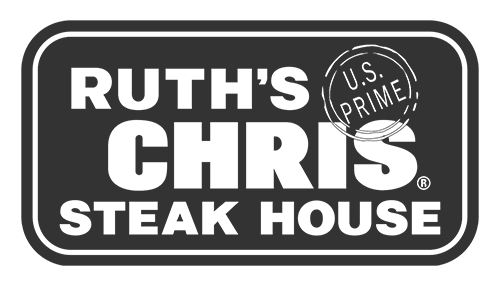
Can inventory management save you money? Short answer, yes.
FoodBAM’s new Restaurant Inventory Tool makes it easier than ever for chefs and general managers to take inventory every time they order, instead of having to conduct one large inventory process at the end of each month or quarter. The restaurant inventory management tool in the FoodBAM app asks users to input inventory levels on each item as the order for that item is placed. This means that if your chef or general manager orders 3 times a week, your inventory will be updated every few days!
The benefits of keeping an up-to-date inventory goes far beyond just knowing what’s in your walk-in or even calculating your monthly food costs and profits. Keeping a good handle on your inventory can actually result in finding new opportunities for your restaurant operation to save money! Below are 7 ways that keeping up with inventory can result in big savings for your operations:
1. Opportunities for new contracts
Paying ongoing attention to your inventory may bring to light certain categories or items that are good targets for deal negotiations with distributors or even directly with manufacturers. Take, for example, a restaurant that notices a spike in the rate in which they are using cases of whole chickens in a particular season. If that operator were to wait until the end of the month to notice this trend, it would likely be too late to make a distributor contract worthwhile. If the purchasing manager, chef or GM picks up on this trend early in the cycle, they can jump on the opportunity to pre-buy one hundred cases from their distributor at a locked-in, contracted rate and increase margins on their popular menu items. Customers who look at FoodBAM analytics regularly will have a good sense of their total purchases, average prices, stock levels and an overall complete snapshot of what’s selling and what’s happening. “Restaurants can get so caught up in things, that they don’t pay attention to the details,” says Heather, a former restaurant owner. “Doing inventory as you go gets you to pay attention to the pulse of things.” Pay attention to what’s going in and out on a daily basis, instead of relying on hindsight, and you may identify your next big contract opportunity.
2. Reduce Shrinkage
Shrinkage and waste are facts of life for restaurant owners and restaurant managers. Keeping up to date inventory makes it easy to identify the sources of theft and prep waste, that would otherwise be hard to track down. Imagine a restaurant owner who takes a monthly inventory and finds a discrepancy between the number of ribeye steaks that were sold for the month and the number that were used from storage. If there are 10 steaks unaccounted for, there’s a good chance a staff member may have ‘borrowed’ the steaks for their weekend grilling. It will be nearly impossible for the owner to track down staffing records, punch-out times and sales records to determine who may have taken the steaks, especially given the comradery of most back-of-house teams. However, if the GM takes inventory on a near-daily basis, it will be much easier to identify when the theft occurred and to narrow down who may have been involved. With a keen ear to the ground, the GM just might even overhear some chatter behind the line about the great BBQ that a certain cook hosted after Thursday night’s shift.

3. Identify and Rectify Staffing and Training issues
Not all product waste can be attributed to shrinkage. A good percentage of the time, poor cooking skills and portion control are the factors at play. A manager who keeps a regular eye on inventory can easily uncover waste areas and identify the cooks that may be responsible for wasted product and provide them with additional training on reducing prep waste, proper portioning, and how to determine meat temperatures. Over-trimming meats and vegetables, improperly cooking steaks and portioning of sides, dressings and sauces are likely culprits for over-use of products.
4. Food Safety
There is no greater threat to a restaurant’s reputation than a food safety incident. Frequent checks of freezers, coolers and dry storage areas will help restaurant general managers prevent old or expired products from making their way onto diners’ plates. “Daily” inventory check-ins will bring products that are near-expiration to the forefront of the chef’s or manager’s mind and allow them to utilize those products safely, rather than throw them out or, even worse, take the risk of having them be used in service.
5. Utilizing dead-weight products
“Every restaurant I’ve ever worked in has had some big heavy cans of beans in the back of dry storage, just slowly approaching their expiration date,” says our former restaurant-owner, Heather. These items that exist in every operation are taking up valuable space, collecting dust, and failing to contribute to revenue. Monthly inventory checks may overlook these items hiding on the backs of shelves and will likely not encourage a GM to consider the short-term impacts that those products could have on profitability. If a chef identifies a few cans of beans while placing her regular grocery order, she can easily add Black Bean Soup to the next day’s menu – thus utilizing the old products, freeing up storage space and adding profit to their weekly service.

6. Receiving issues
Use FoodBAM’s inventory and receiving features together to create a comprehensive picture of every single item that your restaurant purchases from the time of a Purchase Order, through the receiving process, storage process, and even usage. Chefs, owners and GM’s who tally receiving data alongside up-to-date inventory data can identify receiving discrepancies early and often and make corrections with delivery personnel, drivers, DSRs or receiving staff before problems get out of hand.
7. Labor Savings
With FoodBAM’s inventory management system your team will be paying more regular attention to your walk-in. While the obvious win is that inventory now takes less time, the more direct financial savings comes in the form of overtime pay. No more paying for an extra hand or for your team to stay late once a month, now your inventory is completed in regular hours saving you unnecessary labor costs.
When used in combination, par levels, inventory levels, order amounts, received cases, and sales data can create a powerful comprehensive snapshot of a restaurant’s overall financial position and allow for smart decision-making when it comes to questions of staffing, menu development, product usage and even capital investments.










